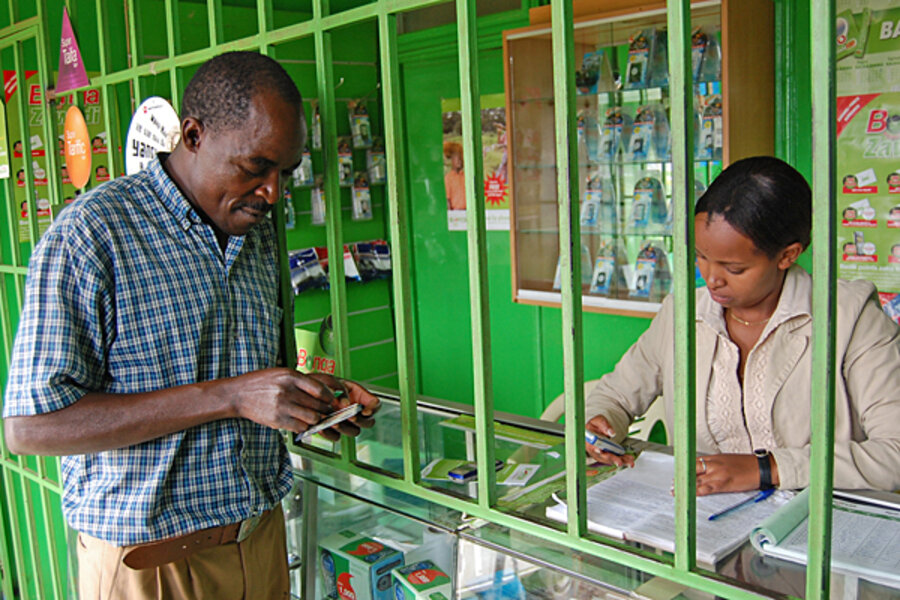Mobile Phone Banking Comes to South Africa. Will It Work?
Loading...
| Johannesburg, South Africa
About half of South Africa’s citizens don’t have bank accounts. Nearly 40% are either unemployed or work informal jobs paid in cash. So how do they pay their bills? How do they send cash to relatives during an emergency?
Until recently, South Africa’s poor simply didn’t have any good banking choices. There are plenty of good banks here, but their charges are so high, and their regulations are so strict – such as proof of regular income – that many poor people simply stowed their cash in the mattress.
Now, thanks to mobile phone giant Vodacom, and its money transfer service M-Pesa, poorer South Africans may finally be able to set aside money, pay bills, and send cash. M-Pesa launched in Kenya in 2007, and quickly overtook traditional banks there by gaining 10 million users in a country of 37 million citizens. Now, thankfully for South Africa’s poor, it has come here as well.
The key to M-Pesa’s success, in Kenya and a growing number of countries, is the African love affair with the cell phone. Sometime this year, the continent will cross a threshold of mobile phone use, with one mobile phone for every African adult.
Even in the most distant village in Africa, one can get decent cell phone reception. And in that village, one can find a shop that sells cell phone airtime to even the poorest families. These shops are the backbone of M-Pesa, where customers can plunk down up to $500 and receive in exchange an access code, which can be used to pick up money at any other shop in the country.
The recipient of the code then goes to his local phone shop and picks up the money. In essence M-Pesa has built a rival to Western Union with a much larger network of offices.
The success of M-Pesa in Kenya has a lot to do with the large number of Kenyans who travel abroad to work, and who send money home to their families by Western Union, Moneygram, and informal money-transfer services like hawala. In a country where the vast majority simply didn’t have access to banking facilities, banks serve a small elite. M-Pesa filled the much larger void left behind.
But in South Africa, which is a much more developed economy, there are many other services that currently fill that void. According to this excellent report in the Daily Maverick, M-Pesa may find the going much tougher in South Africa. As Arthur Goldstuck, analyst at World Wide Worx says, “the mistake that a lot of banks make throughout Africa is assuming that M-Pesa is a template for the rest of Africa when it is not.”
So how will M-Pesa do in South Africa? One hopes it will be a more popular banking choice than the mattress.





